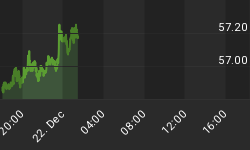Those attempting to tap into home equity are finding the spigot has been shut off.
Countrywide Financial Corp. (CFC) sent letters to 122,000 customers last week telling them they could no longer borrow against their credit lines because the total debt on the home exceeded the market value of the property. The lender says it is using computer modeling to determine which of its customers would have their cash spigot shut off.
My Comment: In a related matter, Calculated Risk recently posted an interesting chart of Mortgage Equity Extraction (MEW) as a percentage of disposable personal income. Let's take a look.

Calculated Risk is estimating about $145 billion in MEW for the fourth quarter. It's not unreasonable to assume 1/3 or perhaps even 1/2 of that MEW will be shut off by tightening lending standards in conjunction with falling home prices. Let's be cautious however, and assume only 1/4 of MEW is shut down. Voilà! The entire economic stimulus program will be consumed by a slowdown in MEW extraction alone ($145 billion total over 4 quarters).
Among the lenders tightening as the Fed loosens, Chase Home Lending (JPM), which has been slowly raising credit standards since last summer, will start imposing new guidelines Monday that further restrict who will be granted a home equity line, the company said. This week, California homeowners can tap as much as 90% of the equity in their homes. Starting Monday, however, Chase won't let homeowners in certain parts of the state -- including Los Angeles, Orange and Imperial counties -- borrow more than 70% of the value of their homes.
My Comment: The 70% rule will put a dead halt to MEW and HELOC extraction for nearly all of Los Angeles, Orange and Imperial counties. Anyone needing cash out financing to pay the bills in those counties is simply out of luck.
At the same time, Fannie Mae, the giant government-sponsored mortgage investor, this month told lenders that sell it mortgages that they couldn't loan as much money to homeowners in areas that have had significant price declines, including much of Southern California. The company reduced its maximum "loan to value" ratio in those areas by five percentage points.
One result of Fannie Mae's change: On a highly promoted Bank of America loan that charges no upfront fees to borrowers, the maximum loan amount is now 90% of a home's value, down from 95%, bank spokesman Terry Francisco said. And on a program that gives mortgages to firefighters and police, the limit has been reduced to 95% from 100%.
Bloomberg shows 15 year mortgage rates at 4.97%. As with home equity loans, catch it if you can. I spoke with Michael Dorff at Trans World Financial about mortgage rates. His phone has been ringing for days from people seeing the drop in the Fed Fund rates hoping to get a better deal. Most can't. To get even a 5.25% rate requires 1.25% to 1.5% in points. A year ago there were a lot of no point deals available.
However, those in existing LIBOR based loans are benefiting. And with 125 basis points in cuts from the Fed in 8 days, the Fed has negated a lot of the impending ARM reset problem. Then again, many people cannot afford the loans they are in. Rising unemployment will also significantly exacerbate the problem.
Rare Greenspan Moment
It does not happen often and when it does it is usually striking: On occasion, Greenspan actually says something that makes sense. The China Post is reporting Former Chair Greenspan doubts 'major' Fed role as risk reprices.
"Global forces can now override most anything that monetary and fiscal policy can do," he said in the interview, adding it was "absolutely" more difficult for the Fed to react to financial-market turmoil than was the case 20 years ago. "The resources of central banks relative to the size of global forces have markedly diminished."
I concur with the above on account of global wage arbitrage, the ease of moving operations to another country then out again (see Dell Walks Away), and also because of peak oil and emerging market demand for global resources.
However, the primary reason the Fed will fail is changing social attitudes towards debt. More evidence of changing attitudes can be found in the The Business of Walking Away.
In the interview, Greenspan quickly recovered to his typical post chairman pattern of attempting to absolve himself of blame with the following statements.
Instruments such as subprime mortgage-backed securities generally have been a "very significant plus in this global world and will continue to be so," Greenspan said. "A number of these have failed. They have failed because they were nontransparent."
Why Subprime Failed
-
Greenspan held interest rates too low too long. 1-3% interest rates were too tempting to both consumers and lenders.
-
The rating agency model is such that Moody's, Fitch, and the S&P all were paid on volume of deals analyzed rather than accuracy of rating. This sad situation was brought about by government sponsorship of the rating agencies. See Time To Break Up The Credit Rating Cartel for more details.
-
Greenspan himself became a cheerleader for ARMs at the worst possible time for consumers.
-
Government sponsorship of the ownership society.
-
The HUD, GSEs, and 300 or affordable housing programs.
With the MEW and HELOC spigots constricted, and with massive cuts in state budgets, the fiscal stimulus proposal is doomed from the start.















